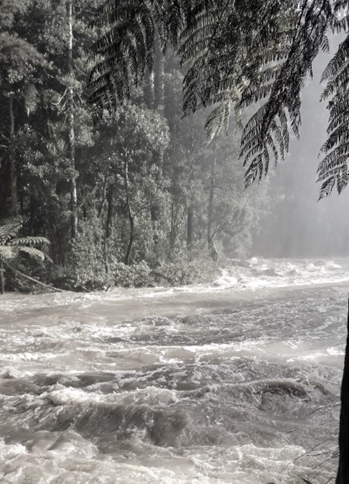High Flow harvesting – influence on in-stream values
High Flow harvesting Part 1 – influence on New Zealand in-stream values
There is a wide body of international literature on the influence of river flow regimes on river hydraulic conditions, water quality, channel geomorphology, and stream ecology. In international literature, river flow has been referred to as a master variable which is linked to various physical, chemical, and ecological states.
These states are linked to ecosystem health, human health, cultural wellbeing, landscape character, recreation and supply of water for a range of uses.
While using water for irrigation, industrial, and domestic purposes can generate important human health and economic benefits, water abstraction can also alter the magnitude and timing of river flows which can cause potentially detrimental environmental consequences. Competing uses for water present a challenge for environmental managers
The National Policy Statement for Freshwater Management 2020 (NPS-FM) recognises these competing demands and contains specific considerations that relate to the role of river flow management in safeguarding ecosystem health. In turn, Te Mana o te Wai, which informs the NPS-FM and its implementation, contains a hierarchy of obligations that prioritises first the health and well-being of water bodies and freshwater ecosystems, second the health needs of people, and third the ability of people and communities to provide for their social, economic, and cultural well-being.
High-flow harvesting of water has been suggested as an option for economic development. This method is defined by a situation where water is taken from the natural environment during times of relatively high flows in rivers or high groundwater levels in unconfined shallow aquifers, stored temporarily, and then used later. This mechanism could potentially meet the requirements of the NPS-FM and Te Mana o te Wai and be particularly useful in situations where low flows are fully allocated.

Kerikeri River in high flow, Northland. Photo by Alan Bee
In Northland, some catchments are already highly allocated below median river flows. Northland Regional Council (NRC) wished to better understand what potential high flow harvesting may have as a tool for increasing water availability and security of supply without adversely impacting on instream values. NRC applied for an Envirolink Advice Grant to subcontract NIWA to undertake an assessment of the impacts of medium to high flow harvesting on instream values.
The aim of this Envirolink work was:
- To define high-flow harvesting;
- To outline parts of the NPS-FM that related to high-flow harvesting;
- To systematically document the potential environmental effects of high-flow harvesting in the New Zealand context by drawing on the domestic and international literature.
Susie Osbaldiston, NRC Resource Scientist (Water Resources) explained that the work has improved the Council’s understanding of high flow harvesting and it’s environmental impacts. She says “The Envirolink report provides context for understanding impacts on Northland but also can be picked up by other councils and provide wider guidance”.
When asked what the next steps may be Susie outlined that this work has already led into a larger project funded by Aqua Intel Aotearoa and a technical report that explores the impacts of high flow harvesting allocation scenarios on rivers flow in Northland and Gisborne. Although this wider work is not an Envirolink project, a link to the report is provided below.
Read the full report [PDF, 1.6 MB]
To view the report from the follow up project click below:
To view a non-technical summary click below:
https://www.nrc.govt.nz/media/afeei3nw/high-flow-harvesting-summary-report.pdf(external link)
Last modified: